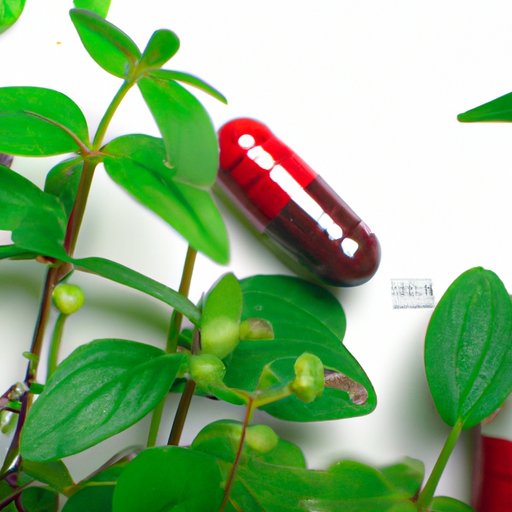I. Introduction
One of the most common irritants in the great outdoors is poison ivy. This plant contains an oil called urushiol, which causes a red, itchy rash when it touches the skin. The symptoms may vary from mild to severe, and can last up to three weeks. The discomfort that comes with poison ivy rash can be overwhelming, especially when you need to sleep or go to work. In this article, we will share some quick and effective remedies on how to get rid of poison ivy rash overnight.
II. Prevention
The best way to deal with poison ivy rash is to avoid it in the first place. Some tips to prevent getting a rash include staying away from plants that resemble poison ivy, wearing long sleeves, pants, and gloves while on outdoor excursions, washing your hands and clothes thoroughly after exposure, and using a barrier cream (e.g., IvyBlock) before going outside. Another way to minimize the chance of developing a rash is to remove poison ivy plants from your property.
III. Immediate Treatment
If you accidentally come into contact with poison ivy, the first step is to stop the spread of the rash by washing the area immediately with soap and water. If you’re camping or hiking, use a wet cloth to clean the affected area. Immediately after washing, apply rubbing alcohol to neutralize the poison ivy oil. Next, apply a cool compress to the affected area to reduce itching. You can also apply hydrocortisone cream to the area to reduce redness and itching. Calamine lotion can be applied to the rash to help dry it up and reduce itching.
IV. Treating the Blisters
One of the most uncomfortable aspects of poison ivy rash is the blisters that can develop. To reduce blistering, apply calamine lotion or aloe vera gel to the affected area. If the rash is severe, you can consider using over-the-counter hydrocortisone cream and taking an oral antihistamine to reduce swelling and itching. Keep in mind that scratching the blisters can cause them to spread and become infected. Do not pop or remove the blisters, and avoid tight clothing that may rub against the rash.
V. Long-term Healing
To reduce the itching associated with poison ivy rash, soak in a cool bath with baking soda or oatmeal. These remedies can help to soothe the skin and reduce itching. Antihistamines such as Benadryl can also be used to reduce itching. Keep the rash site moisturized with a high-quality lotion or cream. Use fragrance-free and dye-free products that are gentle on the skin. Keep the area clean and avoid scratching to prevent irritation and infection.
VI. Over-the-counter Medications
If the rash is severe and the home remedies are not working, you can try over-the-counter medications such as hydrocortisone creams, calamine lotion, and oral antihistamines. Hydrocortisone creams reduce redness and itching and can be applied as needed. Calamine lotion dries up the rash and relieves itching. Oral antihistamines such as Benadryl can be taken to relieve itching and swelling.
VII. When to Seek Medical Assistance
In most cases, poison ivy rash resolves on its own within a few weeks. However, if you develop a fever, blisters become infected, or the rash spreads to sensitive areas like the eyes or mouth, seek professional medical assistance. Additionally, if the rash is severe, or you have difficulty breathing or swallowing, seek medical attention immediately.
VIII. Conclusion
Remember that the key to getting rid of poison ivy rash overnight is to take quick action. Wash the affected area immediately and apply calamine lotion or hydrocortisone cream to the rash site. Soak in a cool bath with baking soda or oatmeal to reduce itching, and take antihistamines to relieve the symptoms. Finally, avoid scratching, wear comfortable clothing, and maintain the affected area clean and moisturized to prevent secondary infections. With your quick and proactive approach, you can get rid of poison ivy rash overnight.
